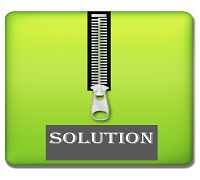Description
Exercise 2.1?
Figure 1: The free-body diagram of the quadrotor UAV.
Given the rigid body diagram as in Figure 1, derive the dynamic equation of the drone, given:
• m=0.5 Kg is the drone mass in the center of gravity of the drone
• L=0.225 m is the length of each arm of the quadrotor frame, i.e. the distance of the motors from the CoG.
• the overall aerodynamic coefficient necessary to compute the lift of the propellers as fi = bωi.
• is the overall aerodynamic coefficient necessary to compute the drag torque of the propellers as τi = bωi.
• D = diag([Dx, Dy, Dz]T) is matrix representing the the drag on the UAV moving in air with velocity p˙, being Dx = Dy = Dz = 0.01 Ns/m
• Ixx = Iyy = 3e−6 Nms2/rad are the moment of inertia on the principal axis x and y
• Izz = 1e−5 Nms2/rad is the moment of inertia on the principal axis z
• The matrix of moment of inertial of the UAV is I = diag([Ixx, Iyy, Izz]T) • gravity acts along the z-axis of the inertial frame of reference, and the gravitational acceleration g is given by g = [0, 0, −9.81]T m/s2
Please consider the following notation:
• p [m] is the position of the CoG of the UAV w.r.t. a fixed inertial frame of reference. Let’s denote p = [x, y, z]T
• Θ [rad] is the representation of the rotation of the body-fixed frame w.r.t. the fixed inertial frame of reference, according to the roll-pitch-yaw angular representation. Let’s denote Θ = [φ,θ,ψ]T
• ω [rad/s] is the angular velocity of the body-fixed frame w.r.t. the inertial frame.
• Ω is the vector of the angular speed of the four propellers, Ω = [Ω
1. Define the rotation matrix representing the orientation of the body-fixed frame w.r.t. theinertial frame.
2. Define the relation between the angular velocity Θ and the rotational velocity of the˙ body-fixed frame ω.
3. Write the linear and angular dynamic equation of the drone in compact form, and clearlyshow each component of the equation explicitly
4. Make a MATLAB/Simulink model of the drone, given initial conditions p(0) = [0, 0, 0]T, p˙(0) = [0, 0, 0]T, Θ(0) = [0,0,0]T and Θ(0) = [0˙ ,0,0]T, and report the following:
• Make a plot of p and Θ, given Ω = [0, and explain the result
• Make a plot of p and Θ, given Ω = [10000, and explain the result • Make a plot of p and Θ, given Ω = [0, and explain the result
Exercise 2.2
Given the same UAV model as in Exercise 2.1, write the equations using the unit quaternions to represent the rotations and answer the following questions:
1. Define the rotation matrix representing the orientation of the body-fixed frame w.r.t. theinertial frame.
2. Define the relation between the angular velocity Θ and the rotational velocity of thebody-fixed frame ω.
3. Write the linear and angular dynamic equation of the drone in compact form, and clearlyshow each component of the equation explicitly
4. Make a MATLAB/Simulink model of the drone, given initial conditions p(0) = [0, 0, 0]T, p˙(0) = [0, 0, 0]T, Θ(0) = [0,0,0]T and Θ(0) = [0˙ ,0,0]T, and report the following:
• Make a plot of p and Θ, given Ω = [0, and explain the result
• Make a plot of p and Θ, given Ω = [10000, and explain the result • Make a plot of p and Θ, given Ω = [0, 10000, 0, 10000]T and explain the result
Exercise 2.3
Using the model in Exercise 2.1 (or 2.2), linearize the dynamic model of th eUAV in hovering conditions. Compare the linearized model with the non-linear one under the same input conditions as in previous exercises (2.1 and 2.2 if solved):
• Make a plot of p and Θ, given Ω = [0, and explain the result
• Make a plot of p and Θ, given Ω = [10000, 0, 10000, 0]T and explain the result
• Make a plot of p and Θ, given Ω = [0, 10000, 0, 10000]T and explain the result




Reviews
There are no reviews yet.